Brand Voice vs Tone of Voice: What’s the Difference?
Blogs | Branding
Written By: Lauren Davison
Blogs | Branding
Written By: Lauren Davison
Speak Your Brand’s Language Right
If you’re working on your brand, chances are you’ve come across the terms brand voice and tone of voice. Sometimes used like they’re twins. But spoiler alert: they’re actually more like cousins.
Understanding the difference between brand voice vs tone of voice can make a huge difference in how your business connects with customers. Getting to know how they differ will help you speak to your audience in a way that really clicks.
Getting this right helps your messaging feel consistent, trustworthy, and relatable. It builds a brand that people recognise and want to engage with.
In this blog, we’ll break down what brand voice and tone of voice mean, why both are important, and how you can develop and use them effectively.
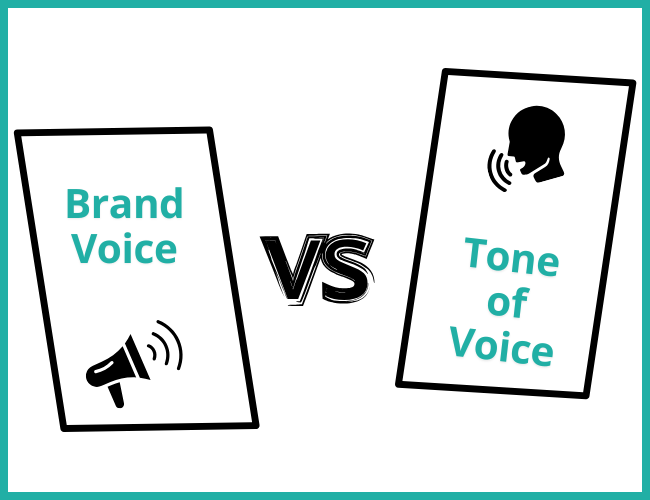
What Is Brand Voice?
Your brand voice is the distinct personality of your business expressed through your words. It’s the consistent character behind everything you say or write, no matter the platform or audience.
Think of brand voice as your brand’s verbal identity. It’s the core values, mission, and personality you want to communicate. It’s what makes your brand you.
Why Does Brand Voice Matter?
A strong brand voice helps your audience instantly recognise your business. When people become familiar with your voice, they feel more connected to your brand. This leads to trust and loyalty.
For example, when you read a blog, email, or social post from a brand with a consistent voice, you can often tell it’s from that brand without seeing the logo or name.
Brand Voice Is Consistent
Your brand voice should remain consistent across all channels and messages. Whether you’re posting on social media, writing a newsletter, or answering customer questions, your voice stays true to your brand’s personality.
It doesn’t mean every message sounds identical. Your tone will shift depending on the context, but the underlying voice stays the same. That’s the key distinction when it comes to understanding brand voice vs tone of voice: voice is fixed, tone is flexible.
What Does Brand Voice Look Like?
Imagine a small creative agency called BrightPath. They define their brand voice as:
- Friendly
- Clear
- Supportive
- Confident
So, no matter where BrightPath communicates. Whether it’s emails, website copy, or social posts, their messaging is always friendly, supportive, and clear. They never sound cold or overly formal, because that’s not who they are.
What Is Tone of Voice?
Your tone of voice is how you express your brand voice in different situations. It’s the mood or attitude behind your words. Unlike brand voice, which is consistent, tone adapts depending on the audience, platform, and message.
This flexibility is key to understanding the difference between brand voice and tone. Voice sets the personality, tone adjusts the delivery.
Why Does Tone Matter?
Tone is what helps your message truly land. It makes your communication feel more human and engaging. For example, your tone should be:
- Empathetic when responding to customer complaints
- Excited when announcing a product launch
- Warm when sending holiday greetings
- Informative when educating your audience
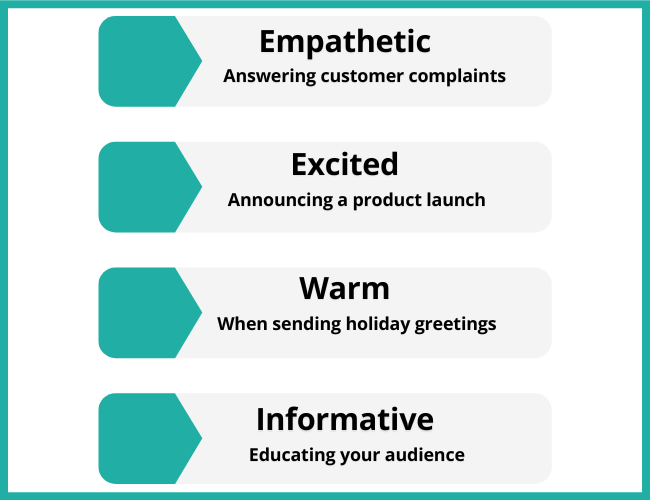
Brand Voice vs Tone of Voice: The Easy Way to Remember
Here’s a simple analogy to keep in mind:
Imagine your brand as a person who is always friendly (brand voice), but are also sometimes serious, sometimes joking, sometimes empathetic (tone). In other words:
- Brand voice = personality
Your brand’s consistent character, like a person’s personality. - Tone of voice = mood
How that personality expresses itself depending on the situation.
Why Knowing the Difference Matters
Many businesses struggle with inconsistent messaging due to confusion around brand voice vs tone of voice. This can lead to:
1. Inconsistent Messaging
If your voice changes every time you communicate, your audience will struggle to recognise or trust your brand.
2. Missed Connection
If your tone never shifts, your communication can feel robotic or irrelevant to the situation. But if your tone shifts without a consistent voice behind it, your brand feels scattered and confusing.
3. Ineffective Communication
Using the wrong tone can make messages seem insensitive, boring, or off-brand. This can be especially obvious during sensitive or crisis situations.
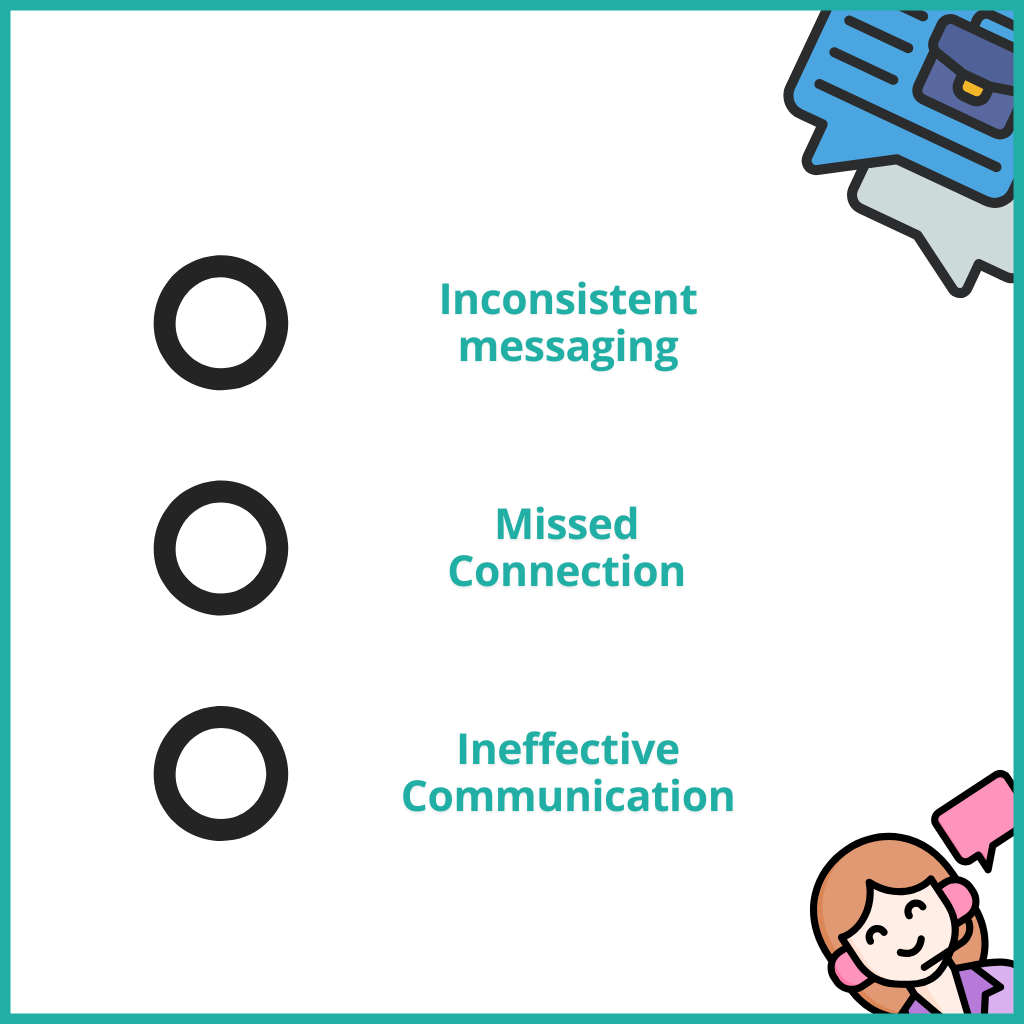
Examples of Brand Voice vs Tone of Voice in Action
Sometimes the best way to understand the difference is to see it in context. Here are a few simple examples:
Example 1 – Brand Voice:
A sustainable clothing brand might have a voice that’s empowering, eco-conscious, and community-focused.
Tone of Voice Variations:
-
Website homepage: Confident and inspiring – “Join the movement towards conscious fashion.”
-
Returns policy page: Clear and helpful – “Not quite right? No worries—returns are easy and free.”
-
Instagram story: Friendly and casual – “Sneak peek 👀 Our new recycled fleece is almost here!”
Example 2 – Brand Voice:
A legal consultancy might have a voice that’s professional, reliable, and straightforward.
Tone of Voice Variations:
-
Services page: Formal and informative – “Our team specialises in employment law, offering clear advice backed by years of experience.”
-
Client email: Reassuring and calm – “We understand this can feel overwhelming. Let’s talk through the next steps together.”
-
LinkedIn post: Assertive and confident – “Our latest case study shows how smart strategy drives real results.”
These examples show how your brand voice stays the same, while the tone adapts to fit different situations, platforms, and emotions.
How to Define Your Brand Voice
Creating a strong brand voice is all about being intentional. With a little thought and consistency, you can create something that really connects.
Step 1: Identify Your Brand Personality Traits
List adjectives that describe your brand as if it were a person. Some examples:
- Friendly
- Professional
- Warm
Step 2: Translate Traits into Communication Style
Explain what each trait means for your messaging. For example:
- Friendly: Use simple, conversational language and avoid jargon.
- Professional: Use clear, precise language and back up claims with data.
- Honest: Be transparent and straightforward in your communication.
Step 3: Understand Your Audience
Know who you’re talking to and what tone will resonate with them while staying true to your voice.
Step 4: Create Voice Guidelines
Document your voice traits and how to apply them. This helps anyone writing for your brand stay consistent.
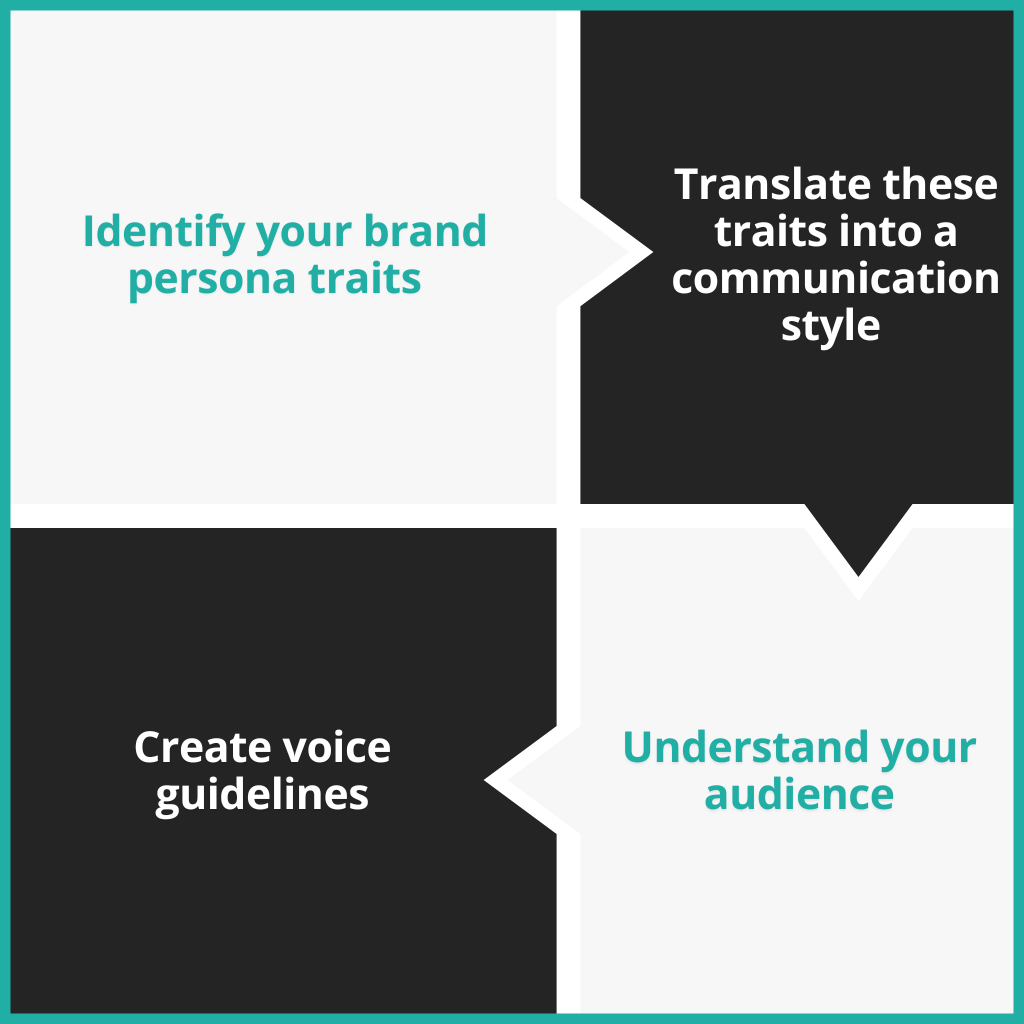
Top Tips for Using Tone Effectively
Tone lets you respond to the situation appropriately while staying true to your brand voice. Getting the balance of brand voice vs tone of voice right can really elevate your messaging. Here are a few quick tips to help you with this in different situations:
-
Let the context lead – A product update might need enthusiasm, while customer concerns call for a more empathetic tone.
-
Keep it consistent – Your tone can shift, but your brand voice should always feel familiar and true to your business.
-
Adapt to the platform – You might be more relaxed on Instagram and more polished on LinkedIn—and that’s okay.
-
Think about your audience – Use a tone that feels natural and respectful to the people you’re speaking to.
-
Read it out loud – If it sounds robotic or forced when spoken, try to make it more conversational.
Voice and Tone in Different Marketing Channels
Your brand voice should stay consistent everywhere, whereas your tone should adapt depending on where you’re speaking and who you’re speaking to. This balance keeps your brand recognisable and your message relevant:
Website Copy: Focused and helpful. Maintain your voice, but let the tone guide users clearly through your content. Strong copy works is also one of our key web design principles.
Blog Posts: Relatable and informative. Match the reader’s mindset. They might be curious, learning, or looking for a solution.
Social Media: Keep things conversational and engaging. A touch of humour or emojis can work if it fits your voice.
Email Marketing: Friendly and clear. Be more personal in welcome emails, more direct in product updates.
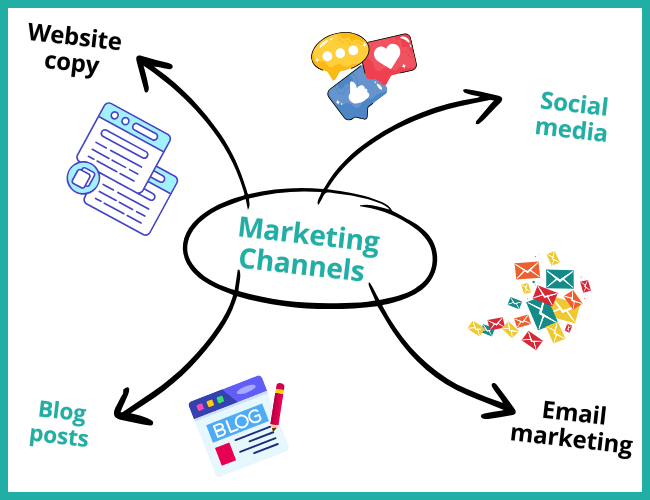
Common Brand Voice vs Tone Mistakes—And How to Avoid Them
Being aware of these pitfalls can save you a lot of time, and help keep your brand looking its best.
Mistake 1: Confusing Brand Voice with Tone
Some businesses mistakenly change their entire brand voice depending on the channel or message. For example, being super casual on Instagram but overly formal on their website.
Why it’s a problem:
This inconsistency can confuse your audience and weaken brand recognition. By mixing up brand voice vs tone of voice, we risk creating messaging that feels disjointed.
How to fix it:
Keep your brand voice consistent across all content. Use tone to adapt how that voice sounds, but never lose your brand’s personality.
Mistake 2: Copying Other Brands’ Voices
It’s tempting to mimic the voice of successful brands, especially if you admire their style.
Why it’s a problem:
Your brand won’t sound authentic or relatable if you’re just imitating someone else. Customers notice when a brand doesn’t sound genuine.
How to fix it:
Focus on what makes your business unique. Develop a voice that reflects your true values and culture. You can explore ways companies have done this in HubSpot’s guide to crafting your best brand voice.
Mistake 3: Ignoring Tone During Sensitive Situations
Using the wrong tone in crises or difficult communications can damage your brand.
For example, a flippant or overly casual tone when addressing customer complaints or company issues can seem dismissive.
Why it’s a problem:
It can alienate customers and harm your reputation.
How to fix it:
Train your team to recognise when a softer, more empathetic tone is required. Adjust your tone based on context without losing your brand’s voice.
Mistake 4: Being Too Rigid With Tone
Some brands stick to one tone all the time (e.g., always formal or always playful).
Why it’s a problem:
A static tone can make your communication feel repetitive and unrelatable across different platforms and audiences.
How to fix it:
Be flexible with tone. Adapt it to your audience, platform, and message while keeping your core voice consistent.
Wrapping Up: The Voice Behind Your Brand
Understanding brand voice vs tone of voice helps you build a brand that is clear, consistent, and relatable. It’s the steady personality your audience gets to know and trust. Your tone is the way you flex that personality to suit different situations.
Getting these right means your brand communicates with confidence and connection, no matter the platform or message.
At Midland Marketing, we help businesses develop authentic brand voices and tone strategies that resonate with their audience and stand out in the market.
Ready to create a brand that speaks your language? Get in touch today!


Written by - Lauren Davison
Introducing Lauren – one of our content writers who has a flair for SEO and creative strategy!
With a Master’s Degree in Creative Writing, Lauren has niched down into SEO and content writing.
Outside of work, she loves watching the darts, reading and the pub on the weekend.
Want some more?
Latest Insights & News

Reciprocal Links in SEO: Do They Still Boost Rankings or Risk Penalties?
For the keyword “reciprocal links SEO,” focus on explaining how reciprocal linking works today. Reciprocal links are not harmful by default, but Google can flag excessive or manipulative link exchanges. To stay safe, only exchange links when they are contextually relevant, natural, and valuable to users.

SEO as the Foundation of Digital Growth: Why It’s More Than Just a Marketing Tactic
When focusing on “SEO for business growth,” highlight how SEO directly contributes to long-term scalability. Modern SEO goes beyond ranking—it boosts brand visibility, qualified traffic, customer trust, and conversion opportunities. To optimize effectively, ensure your content covers user intent, builds topical authority, and leverages technical SEO elements like fast loading, mobile-friendly design, and structured data.

AEO Mastery: Step-by-Step Guide to Building AI Citations & Boosting Visibility
When targeting the keyword “AEO Guide to Building AI Citations & Boosting Visibility,” focus on Authoritative Engine Optimization (AEO) principles. AI-driven search requires clear, structured, and entity-rich content.
